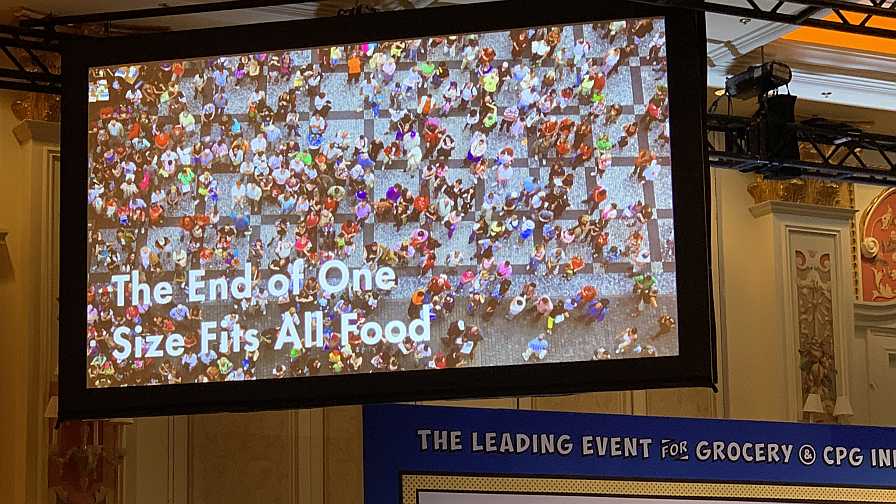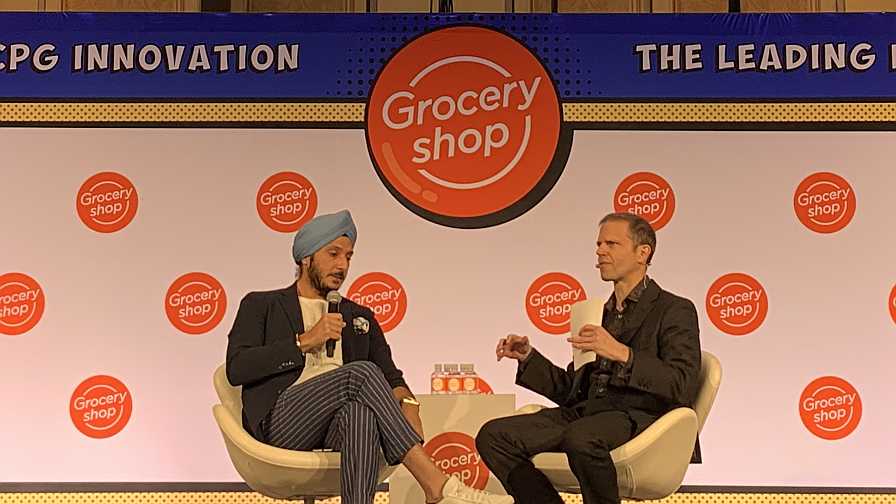4 Top Tech Takeaways From the Groceryshop 2019 Conference

The retail grocery industry is aiming to provide a more personalized shopping experience. Modern technology options are shepherding that goal to fruition in short order.
Photo by Vonnie Estes
This year’s Groceryshop conference in Las Vegas drew a whopping 3,000+ leaders from across today’s diverse grocery retail landscape, as well as established and new consumer packaged goods (CPG) brands. It’s now a top event around disruption and innovation in grocery and CPG.
The fresh produce industry — and agriculture in general — can learn much about our future from Groceryshop 2019. Even with my extensive background in agriculture, I was fascinated to learn more about the drivers, trends, and issues in grocery retail today.
My biggest learning: Food producers must be ready for the technology tsunami that is happening in food retail — it will affect everything we do and produce. We all must become technology companies. This mandates changes in skill sets we need, how and who we hire, our company cultures, and more.
Relevant to produce growers and your business, here are four technology-centric takeaways from Groceryshop 2019:
1. The Retail Industry Is Planning for an Increasingly Digital Future
Communication with and procurement by our retail customers will come through increasingly more digital means. Aided by artificial intelligence (AI) and machine learning (ML), retailers will know exactly what products their customers want, how much, where, and when. Food producers will need to harness technology to better plan and predict production, to deliver fresher foods to retail with less waste and fewer stocking shortages.
Soon, shoppers in a physical store will be able to order staples like batteries and toilet paper in advance, to be ready for them at a cashier-less checkout while they select their fresh fruits and veggies in-store. That means that fresh produce can be the center — and most experiential — part of tomorrow’s store.
“The digital revolution has brought about disruptions to the supply chain that are hidden in plain sight but have wide-ranging implications,” Dave Marcotte, Kantar Retail’s SVP urged. “Retailers and suppliers confronting the new supply chain reality should be aware of their challenges and opportunities.”
2. Consumers Want High Tech AND High Touch
Voicing a refrain heard throughout the show, “The customer is leading the way,” reported Albertsons’ Narayan Iyengar. Further, Proctor & Gamble’s Carolyn Tastad added that today’s consumers demand both “high tech and high touch” in their grocery experience.
Modern consumers demand speed and convenience. They see the opportunity cost of shopping and want to spend less time doing it. So, they want retailers to know them and to personalize experiences for them, with speed and convenience in mind. Consumers also want to feel good about the products they buy and the companies they buy from.
Technology is key to helping food producers deliver food faster, fresher, and more sustainably. We can use machine learning to better predict food supply and demand, so that less food is wasted. We can reduce our carbon footprint by using sustainable packaging, in particular substituting for plastics across the supply chain. We can use blockchain to become even more transparent, so consumers know where products come from and how they were produced.
Produce has a big advantage with these consumers. Fruits and vegetables are high touch, delivering not just a nourishing, but also a sensory experience that fits with what consumers are demanding now.
3. Pay Attention to These Three Technologies Now
Ahold Delhaize’s Farhan Siddiqi was asked for his top three technologies in grocery over the next five years:
1. Human-computer interfaces: Voice commands will be used to order, direct, and optimize the supply chain and the resulting shopping experience.
2. Robotics and automation: Robots will handle repetitive tasks like auditing store shelves while autonomous vehicles will speed customer deliveries, freeing up human labor for more customer-facing tasks.
3. Data analytics: Applying AI and ML across the supply chain to analyze data will address a broad range of inefficiencies. For example, forecasting consumer demand will reduce store out-of-stocks and make distribution centers more efficient.
John Furner of Sam’s Club described the new shopping experience at its all-digital pilot store Sam’s Club Now. Customers’ mobile phones guide them through the store and facilitate scan-and-go checkout. Meanwhile, employees get real-time information on customers’ in-store shopping experiences so they can respond to issues and service customers faster. Ever-increasing quantities of data on customers’ shopping patterns can be analyzed to draw insights and make better decisions.
Retail use of these technologies also will reach back into the produce supply chain, for example, by allowing for better sales and order planning.

During Groceryshop 2019 in Las Vegas, Gulrez Arora of Mars Inc. (left) discussed the importance of accelerators in the industry and the role they play in helping companies like his expand technology capability.
Photo by Vonnie Estes
4. Sources of Innovation are Expanding
Speakers from today’s largest retail and CPG companies such as Mars, Target, P&G, and Ahold Delhaize noted they will not deliver the most cutting-edge technology — that will come from large technology providers like AWS, Salesforce, IBM, or Google. For the food industry, startups will build specific applications on top of those platforms. The fresh produce supply chain will benefit from technology developed outside our industry. Our challenge will be to get plugged into the prediction and product flow tools that are being put in place at retail.
To ensure they will have the tech tools they need, CPG companies have launched a flurry of accelerators and venture capital arms, including Kellogg’s eighteen94, Campbell Soup’s Acre Venture Partners, and Kraft Heinz’ Evolv Ventures. At Groceryshop 2019, Gulrez Arora discussed Mars’ in-house tech accelerators, Launchpad, and Seeds of Change. This is smart. Accelerators are a relatively low-touch way to give corporations access to agile, innovative companies to access new technology.
Millions of dollars are flowing from these large companies to support innovation in food, which helps build a healthy ecosystem for development of new technologies from plant genetics to fork.
Today’s consumer is driving retail, and retail in turn drives food production. We all are in for a wild ride as we seek to deliver the fresh produce that consumers want, when they want it, how they want it — safely, transparently, sustainably, and with no waste. The solutions we employ to adapt to this changing landscape will be both “high tech and high touch” shifts for us. The most forward-thinking businesses are and will adapt to this new grocery world by embracing new technology, new business models, and new technology partners.










